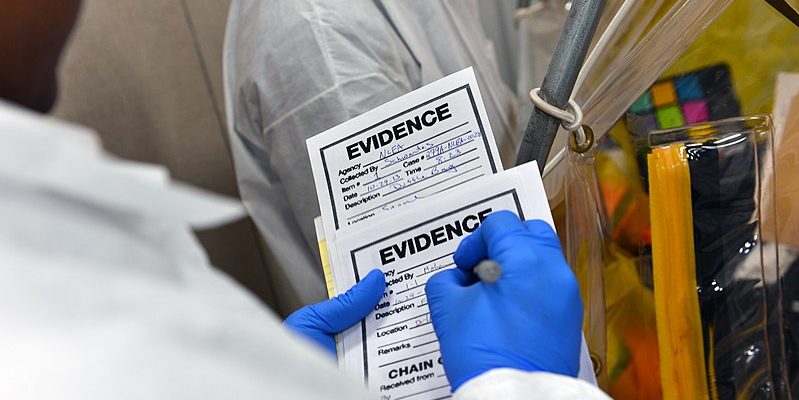By: Frank Emmert Traditional fiat currencies managed by governments and central banks have had negative impacts on environmental, social, and governance (ESG) goals. Central banks in mature democracies pursue policies that prioritize economic growth and high employment. However, these policies often lead to inflation, eroding the savings and pension funds of average citizens and encouraging risky behavior by banks and entrepreneurs. The pursuit of endless growth is socially and environmentally unsustainable. Leaders in developing countries and dictatorships use expansive monetary policy to maintain their positions, further exacerbating the situation. Convertible fiat currencies moving across borders in untraceable transactions evade regulation and taxation, with trillions hidden in offshore tax havens. Virtual or crypto currencies on a blockchain can address these issues. Transactions on a public blockchain are transparent, traceable, and immutable, and monetary policy is controlled by algorithms, free from political influence. However, existing crypto currencies like Bitcoin and Ethereum have failed to align with ESG goals and have harmed the environment. They favor large capital holders and allow illicit money movements. Blockchain technology can be used differently, however. A virtual currency with strong governance, pegged to a currency basket, could be designed to build trust and appreciate in value, promoting
Tag: Technology and Innovation

The GPTJudge: Justice in a Generative AI World
By: Maura R. Grossman, Paul W. Grimm, Daniel G. Brown, and Molly Xu Generative AI (“GenAI”) systems such as ChatGPT recently have developed to the point where they can produce computer-generated text and images that are difficult to differentiate from human-generated text and images. Similarly, evidentiary materials such as documents, videos, and audio recordings that are AI-generated are becoming increasingly difficult to differentiate from those that are not AI-generated. These technological advancements present significant challenges to parties, their counsel, and the courts in determining whether evidence is authentic or fake. Moreover, the explosive proliferation and use of GenAI applications raises concerns about whether litigation costs will dramatically increase as parties are forced to hire forensic experts to address AI-generated evidence, the ability of juries to discern authentic from fake evidence, and whether GenAI will overwhelm the courts with AI-generated lawsuits, whether vexatious or otherwise. GenAI systems have the potential to challenge existing substantive intellectual property (“IP”) law by producing content that is machine, not human, generated, but that also relies on human-generated content in potentially infringing ways. Finally, GenAI threatens to alter the way in which lawyers litigate and judges decide cases. This article discusses these issues, and offers a

Personalized Smart Guns: A Futuristic Dream or a Pragmatic Solution
By: Andres Paciuc Download Full Article (PDF) Cite: 19 Duke L. & Tech. Rev. 198

Professor Brandon Garrett on Exposing the Flaws in Forensics
By Brendan Clemente This past March, Duke Law’s Professor Brandon Garrett released his newest book, Autopsy of a Crime Lab: Exposing the Flaws in Forensics. Professor Garrett founded the Wilson Center for Science and Justice and studies the use of forensic evidence in criminal cases. Brendan Clemente, Duke Law & Technology Review’s (DLTR) Managing Editor, sat down with Professor Garrett to discuss the book. Thank you for joining DLTR to discuss your new book, Autopsy of a Crime Lab: Exposing the Flaws in Forensics. What made you want to delve into this topic in this book? My introduction to forensics came after law school. I took evidence in law school, for which I am glad now that I am now teaching it. We did not cover expert evidence. I did not take law and science classes, and I went to law school having turned away from math and science, like most of us lawyers do. When I was in practice, I worked at a civil rights firm where there were two types of cases one could gravitate toward: police brutality cases and wrongful conviction cases. I told the partners I wanted to work on the police brutality cases. The wrongful

Federalism in the Algorithmic Age
By: Chad Squitieri Download Full Article (PDF) Cite: 19 Duke L. & Tech. Rev. 139
Informational Inequality: How High Frequency Traders Use Premier Access to Information to Prey on Institutional Investors
By: Jacob Adrian In recent months, Wall Street has been whipped into a frenzy following the March 31st release of Michael Lewis’ book “Flash Boys.” In the book, Lewis characterizes the stock market as being rigged, which has institutional investors and outside observers alike demanding some sort of SEC action. The vast majority of this criticism is aimed at high-frequency traders, who use complex computer algorithms to execute trades several times faster than the blink of an eye. One of the many complaints against high-frequency traders is over parasitic trading practices, such as front-running. Front-running, in the era of high-frequency trading, is best defined as using the knowledge of a large impending trade to take a favorable position in the market before that trade is executed. Put simply, these traders are able to jump in front of a trade before it can be completed. This Note explains how high-frequency traders are able to front-run trades using superior access to information, and examines several proposed SEC responses. Download Full Article (PDF) Cite: 14 Duke L. & Tech. Rev. 256
Aereo and Internet Television: A Call to Save the Ducks (A La Carte)
By: Pooja Patel If it looks like a duck, swims like a duck, and quacks like a duck, it is probably a duck. The most recent U.S. Supreme Court decision regarding the Copyright Act employed this “duck test” when determining that Aereo, an Internet content-streaming company, violated the Copyright Act by infringing on the copyrights of television broadcast networks. The Supreme Court ruled that Aereo’s Internet streaming services resembled cable television transmissions too closely. Therefore, by streaming copyrighted programming to its subscribers without the cable compulsory license, Aereo violated the Transmit Clause of the 1976 Copyright Act. Subsequently, Aereo used this Supreme Court decision to obtain a compulsory license from the Copyright Office but was denied. Forced back into litigation, Aereo filed for Chapter 11 Bankruptcy This Issue Brief describes Aereo’s technology, the litigation that followed, and the related precedent, and concludes that the district court should have granted Aereo a Section 111 Statutory License in line with the Supreme Court’s “duck test.” It considers the implications of the Court’s preliminary injunction against Aereo’s “a la carte” TV technology, what this means for the future of similar technological innovation, and the effects on consumers and competition. Download Full Article (PDF)
Authenticity and Admissibility of Social Media Website Printouts
By: Wendy Angus-Anderson Social media posts and photographs are increasingly denied admission as evidence in criminal trials. Courts often cite issues with authentication when refusing to admit social media evidence. Cases and academic writings separate recent case law into two approaches: The Maryland Approach and the Texas Approach. The first method is often seen as overly skeptical of social media evidence, setting the bar too high for admissibility. The second approach is viewed as more lenient, declaring that any reasonable evidence should be admitted in order for a jury to weigh its sufficiency. This Brief addresses the supposed differences between the two sets of cases and suggests that courts are not actually employing two distinct approaches. The Maryland Approach courts are not holding social media content to a higher standard than the Texas Approach courts, but are merely responding to a lack of evidence connecting the proffered content to the purported author. Download Full Article (PDF) Cite: 14 Duke L. & Tech. Rev. 33
Periodic Reporting in a Continuous World: The Correlating Evolution of Technology and Financial Reporting
By: Daniel C. Rowe The evolution of technology has drastically altered what it means to be a reporting company in the eyes of the Securities and Exchange Commission. Technological development has also played a large role in the shifting trend from periodic reporting to continuous reporting, as is particularly apparent in the evolution of the Form 8-K. It is true that the increasingly technological world of continuous reporting does not come without disadvantages. This issue brief, however, argues that despite the increased risks and challenges of continuous reporting, its net effect on disclosure, and the investing community generally, is positive. With that benefit in mind, this paper further suggests four new amendments to the Form 8-K. Download Full Article (PDF) Cite: 13 Duke L. & Tech. Rev. 248
